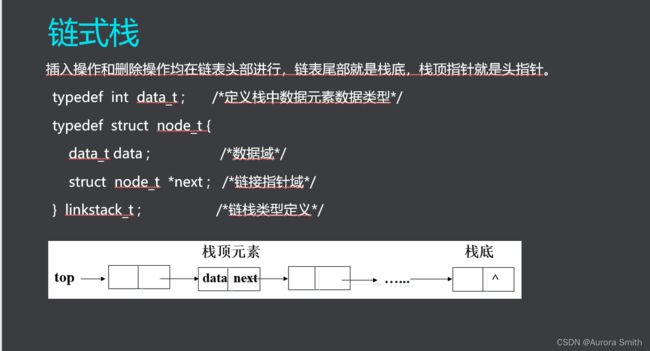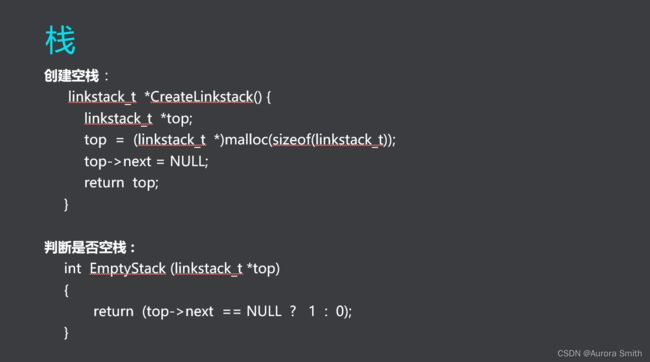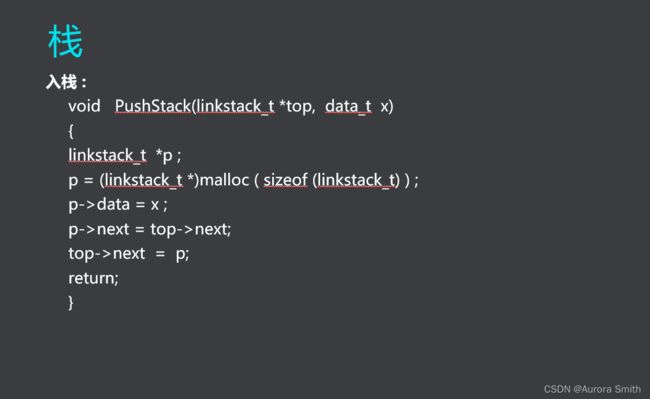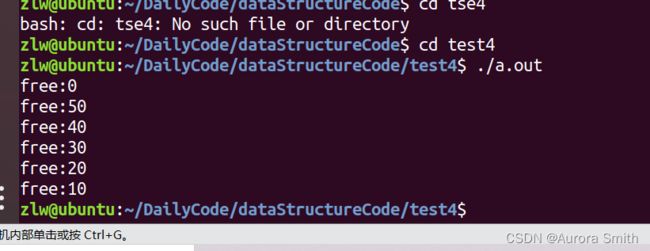- Python 脚本最佳实践2025版
前文可以直接把这篇文章喂给AI,可以放到AI角色设定里,也可以直接作为提示词.这样,你只管提需求,写脚本就让AI来.概述追求简洁和清晰:脚本应简单明了。使用函数(functions)、常量(constants)和适当的导入(import)实践来有逻辑地组织你的Python脚本。使用枚举(enumerations)和数据类(dataclasses)等数据结构高效管理脚本状态。通过命令行参数增强交互性
- (Python基础篇)字典的操作
EternityArt
基础篇python开发语言
一、引言在Python编程中,字典(Dictionary)是一种极具灵活性的数据结构,它通过“键-值对”(key-valuepair)的形式存储数据,如同现实生活中的字典——通过“词语(键)”快速查找“释义(值)”。相较于列表和元组的有序索引访问,字典的优势在于基于键的快速查找,这使得它在处理需要频繁通过唯一标识获取数据的场景中极为高效。掌握字典的操作,能让我们更高效地组织和管理复杂数据,是Pyt
- HashMap的Get(),Put()源码解析
Ttang23
哈希算法散列表算法
1、什么是HashMap?HashMap是Java中用于存储键值对(Key-Value)的集合类,它实现了Map接口。其核心特点是:无序性:不保证元素的存储顺序,也不保证顺序恒定不变。唯一性:键(Key)不能重复,若插入重复键会覆盖原有值。允许null:允许一个null键和任意数量的null值。非线程安全:相比HashTable,HashMap不支持同步,性能更高。2.核心数据结构:哈希表(Has
- C++STL-queue
s15335
C++STLc++开发语言
一.基本概念和数据结构里面的队列一样,只支持先进先出,队尾插,队头删。二.基本用法1.queue对象创建1.默认构造函数queueq1;2.拷贝构造函数queueq2(q1);2.queue赋值操作queueq1;queueq2;q2=q1;3.queue入队queueq;q.push(5);//5q.push(4);//54q.push(3);//543q.push(2);//5432q.pus
- zookeeper etcd区别
sun007700
zookeeperetcd分布式
ZooKeeper与etcd的核心区别体现在设计理念、数据模型、一致性协议及适用场景等方面。ZooKeeper基于ZAB协议实现分布式协调,采用树形数据结构和临时节点特性,适合传统分布式系统;而etcd基于Raft协议,以高性能键值对存储为核心,专为云原生场景优化,是Kubernetes等容器编排系统的默认存储组件。12架构与设计目标差异ZooKeeper。设计定位:专注于分
- 数据结构:导论
梁辰兴
数据结构学习笔记数据结构导论算法时间复杂度空间复杂度
目录一,数据结构的研究内容二,基本概念与术语(一)数据、数据元素、数据项与数据对象(二)数据结构(三)数据类型与抽象数据类型️三,抽象数据类型的表示与实现⚙️四,算法与算法分析⚖️(一)算法的定义及特性(二)评价算法优劣的基本标准⏱️(三)算法的时间复杂度(四)算法的空间复杂度章结一,数据结构的研究内容数据结构是计算机科学的核心基础,其研究内容可概括为三大维度:数据组织形式:探索如何将现实世界中的
- redis中什么是bigkey?会有什么影响?
Vic2334
redis
什么是bigkey?会有什么影响?bigkey是指key对应的value所占的内存空间比较大,例如一个字符串类型的value可以最大存到512MB,一个列表类型的value最多可以存储23-1个元素。如果按照数据结构来细分的话,一般分为字符串类型bigkey和非字符串类型bigkey。字符串类型:体现在单个value值很大,一般认为超过10KB就是bigkey,但这个值和具体的OPS相关。非字符串
- 项目开发日记
框架整理学习UIMgr:一、数据结构与算法1.1关键数据结构成员变量类型说明m_CtrlsList当前正在显示的所有UI页面m_CachesList已打开过、但现在不显示的页面(缓存池)1.2算法逻辑查找缓存页面:从m_Caches中倒序查找是否已有对应ePageType页面,找到则重用。页面加载:从资源管理器ResMgr加载prefab并绑定控制器/视图组件。页面关闭:从m_Ctrls移除,添加
- 上位机知识篇---常见的文件系统
文件系统是操作系统用于管理和组织存储设备上文件的机制,它决定了文件的存储方式、命名规则、访问权限、数据结构等。以下是常见的文件系统及其应用场景、优势和劣势的详细介绍:一、Windows常用文件系统1.FAT32(FileAllocationTable32)基本特点:采用32位文件分配表,是FAT系列的升级版,支持最大单文件4GB,最大分区容量理论上为8TB(实际常用2TB以内)。应用场景:U盘、存
- 《C++性能优化指南》 linux版代码及原理解读 第一章
v俊逸
C++性能优化指南性能优化C++性能优化性能优化
概述:目录概述:性能优化的必要性:C++代码优化策略总结用好的编译器并用好编译器使用更好的算法使用更好的库减少内存分配和复制移除计算使用更好的数据结构提高并发性优化内存管理性能优化的必要性:按照当今的CPU运行速度来说,执行一条指令所需要的时间是10的-9次方的时间单位,如此快速的执行速度是否就没有性能优化的必要了呢?其实不然,性能优化与CPU的执行速度并无非常大的关系,试想一下,一段代码,如果用
- pandas销售数据分析
pandas销售数据分析数据保存在data目录消费者数据:customers.csv商品数据:products.csv交易数据:transactions.csvcustomers.csv数据结构:字段描述customer_id客户IDgender性别age年龄region地区membership_date会员日期products.csv数据结构:字段描述product_id产品IDcategory
- Go 语言 map 高级应用:优化技巧与复杂结构处理
Go语言map高级玩法全解析引言在Go语言的编程世界中,map是一种极为重要且强大的数据结构。它能够高效地存储和检索键值对,在众多场景中发挥着关键作用。对于初涉Go语言的开发者而言,掌握map的基本使用方法,如声明、初始化、插入、删除和查找元素等,是迈向编程之路的重要一步。然而,仅仅停留在基础层面,远远无法挖掘出map的全部潜力。在实际的工程项目里,面对复杂多变的业务需求和日益增长的数据量,深入理
- 四. go 常见数据结构实现原理之 map
苹果香蕉西红柿
#二.Go常见数据结构实现原理数据结构golang哈希算法
目录一.基础hash的基本方案二.map初始化创建map的底层结构hmapbucket桶桶的细节总结minTopHash与是否迁移extra一些重要的常量标志初始化三.插入数据存储数据时key的定位策略四.查询数据五.删除六.扩容扩容策略与扩容大小扩容与数据迁移源码七.总结map底层结构相关问题总结初始化底层总结插入数据底层总结查询数据底层总结扩容底层总结常见问题一.基础在go基础入门十一map集
- Golang map
m0_67393686
javagolangjava数据结构后端apache
前言哈希表是一种巧妙并且实用的数据结构。它是一个无序的key/value对的集合,其中所有的key都是不同的,然后通过给定的key可以在常数时间复杂度内检索、更新或删除对应的value。在Go语言中,一个map就是一个哈希表的引用,map类型可以写为map[K]V,其中K和V分别对应key和value。map中所有的key都有相同的类型,所有的value也有着相同的类型,但是key和value之间
- 【go基础】4.基本数据结构之map
喝醉的小喵
go语言原理golang数据结构哈希算法后端
目录哈希表map-主要思想-特点-哈希函数-数据结构-map初始化-mapvalue为什么不能寻址-map为什么是无序的-map为什么是o(1)的-开发时应注意的哈希表map理解Golang哈希表Map的原理|Go语言设计与实现彻底理解GolangMap-知乎-主要思想1、桶map的底层存储结构式hmap,里面有一个桶数组,所有kv都是存在这些桶里的,每个桶的结构是bmap每个桶中最多可以存8个k
- C#基础-区分数组与集合
yi碗汤园
C#开发语言c#前端
目录区分数组与集合1.定义1)数组2)集合2.大小1)数组2)集合3.访问速度1)数组2)集合4.内存管理1)数组2)集合5.使用场景1)数组2)集合总结本篇文章来学习一下C#的数组(Array)与集合(Collection),数组和集合是两种常用的数据结构,均为引用类型,下面通过定义、大小、访问速度等方面比较数组和集合的不同,来进一步加深对它们的理解。区分数组与集合1.定义1)数组①数组是固定大
- map数据结构在Golang中是无序的,并且键值对的查找效率较高的原因
map,map在Go语言中是无序的,是因为在Go语言中,map基于哈希表实现,它的遍历顺序依赖于哈希表内部存储状态,对并发编程的潜在影响包括可能引发数据一致性问题,也就是并发度写实易导致读到不一样的数据或遍历出错;还会导致结果可重复性的问题,即每次运行程序得到的依赖遍历顺序的计算结果可能不同。map的键值对查找效率高是由于:(1)哈希表的时间复杂度,哈希表的平均复杂度为O(1),最欢情况下为O(n
- C#集合:从基础到进阶的全面解析
阿蒙Armon
C#继续学习c#windowslinux
C#集合:从基础到进阶的全面解析在C#编程中,集合是处理数据集合的核心工具。无论是存储一组对象、实现缓存机制,还是处理复杂的数据结构,都离不开集合的灵活运用。本文将全面深入地探讨C#集合体系,从基础概念到高级技巧,帮助开发者掌握集合的精髓,写出更高效、更优雅的代码。一、集合概述与分类C#集合框架是.NET类库的重要组成部分,它提供了一系列用于存储和操作数据的类和接口。与数组相比,集合具有动态扩容、
- 基于 Python 的图书管理系统(源码)
摘要:本论文详细阐述了利用Python语言开发一个简易图书管理系统的过程。该系统具备图书信息录入、删除、修改、查询以及借阅管理等核心功能,可有效提升图书管理的效率与便捷性。通过阐述系统的需求分析、设计思路、代码实现及测试过程,展示了Python在小型管理系统开发中的应用潜力,为相关领域的软件开发提供了有益参考。关键词:Python编程;图书管理系统;数据结构;代码实现一、引言(一)研究背景随着数字
- SQL 索引与日志知识点详解及练习题
索引和日志在数据库的高效运行和数据安全中扮演着重要角色。下面我们详细梳理索引和日志的相关知识,并通过练习题加深理解。一、知识点梳理(一)索引基本概念:索引是为了加速查询的数据结构,其数据结构为B+树。B代表Balance(平衡),数据保存在叶子结点中。分类主键索引:唯一标识一行,不允许为空,一张表只能有一个主键。唯一索引:标识一行,允许为空,一张表可以有多个唯一索引。普通索引:允许重复和空值。联合
- 数据结构 顺序表(2)---顺序表的实现
1.顺序表的实现为了能够实现顺序表这一个数据结构,小编是分别分为三个文件编写完成的。分别是一个头文件(.h),一个实现文件(.c),一个测试文件(.c)。以下对这三个模块(头文件、顺序表实现文件、测试文件)的代码,按功能模块、函数逻辑等进行详细解释,帮助理解动态顺序表的完整实现:1.1头文件(SeqList.h)头文件(SeqList.h)——接口定义与类型声明:#include#include#
- 二叉搜索树(BST)
海绵宝宝的好伙伴
数据结构算法c++
二叉搜索树(BinarySearchTree,BST),也称为二叉排序树,是一种重要的数据结构。它将树形结构的灵活性与有序性结合起来,使得查找、插入和删除等操作的平均时间复杂度都能达到O(logN)。二分搜索算法,其底层逻辑恰好对应在一棵隐形的二叉搜索树上的查找过程。例如,对有序数组[0,5,24,34,41,58,62,64,67,69,78]进行二分搜索,其过程完全可以可视化为在一棵以58(中
- 字典树前缀匹配
hi error.cn
经验分享
字典树前缀匹配什么是字典树(Trie)字典树(Trie),又称单词查找树或键树,是一种有序树结构的数据结构,常用于字符串关联查找的应用场景中。其主要特点是每个节点代表一个字符,并且从根到子节点的路径上的字符连起来构成所有在字典中的前缀。由于这种特性,字典树特别适合进行前缀匹配和自动补全等操作。字典树的基本结构字典树由节点(Node)和边(Edge)组成。每个节点表示一个字符或为空终结符,而边则代表
- 初阶数据结构之栈的实现
CodePracticer
数据结构数据结构开发语言笔记
前言:实现栈之前,先来了解一下什么是栈。1.栈的概念栈是一种特殊的线性表,只允许在固定一端插入和删除操作,进行数据插入和删除操作的一端称为栈顶,另一端称为栈底。栈中的数据元素遵守先进后出,后进先出LIFO(LastInFirstOut)的原则。压栈:栈的插入操作叫做进栈(压栈,入栈),入数据在栈顶。出栈:栈的删除操作叫做出栈,出数据也在栈顶。2.栈的底层结构如何选择现在我们已经了解了栈的结构特性了
- STL之无序关联式容器&针对于自定义类型的操作
宛西南浪漫戈命
STLc++算法数据结构stl
关联式容器包括:unordered_set、unordered_multiset、unordered_map、unordered_multimap四种。它们的底层使用的数据结构都是哈希表。要学习它们的使用,也可以从:初始化、遍历、查找、插入、删除、针对自定义类型等方面进行学习。但是首先需要学习关于哈希表的几个概念:哈希函数、哈希冲突、解决哈希冲突的方法、装载因子(装填因子、负载因子)哈希相关概念哈
- Pydantic 保姆级教程:Python 数据验证与设置管理的终极指南
JJJ@666
基础知识(Python)pythonPydantic数据验证设置管理库
Pydantic是一个强大的Python库,主要用于数据验证和设置管理。它通过Python类型注解来定义数据结构,并自动提供数据验证、序列化和文档生成功能。本教程将带你从基础到高级全面掌握Pydantic。核心概念Pydantic的核心是模型(Model),它类似于Python的数据类(dataclass),但提供了更多功能:类型验证:自动验证输入数据的类型数据转换:自动将输入数据转换为正确的类型
- 【Zephyr开发实践系列】06_存储块设备驱动开发(Nand Flash)
jz-炸芯片的zero
Zephyr实践开发驱动开发单片机嵌入式硬件linuxiotmcu物联网
文章目录前言一、Flash驱动模型介绍1.1核心基础应用API(必须)1.2高级功能应用API(可选)1.3设置数据结构1.4硬件初始化1.5设备实例化二、数据结构定义2.1获取Flash块与页大小三、核心API函数实现3.1擦除函数3.2读取函数3.3写入函数4.4layout函数4.5坏区检测函数总结前言在嵌入式系统中,常见的Flash存储模块根据接口类型和用途可分为NOR、NAND、EMMC
- 升本计算机知识点多怎么记笔记,2017人大计算机帮助提升考研答题技巧的经验...
Joanne zz
升本计算机知识点多怎么记笔记
2017人大计算机帮助提升考研答题技巧的经验很多同学对于计算机考研不清楚怎么复习,在这里凯程老师系统介绍一下高效率复习,供同学们参考。计算机专业的专业课都是统考408-计算机学科专业基础综合,包含计算机组成原理、数据结构、操作系统、计算机网络。凯程老师从每年的试题来看,风格都完全不一样,不深入理解计算机系统是很难考出好成绩的。所以凯程老师建议大家需要尽早复习计算机的专业课。每年的真题都非常灵活,所
- 2025秋招优秀项目推荐
微凉的衣柜
人工智能深度学习算法gpt
01.多个优异的数据结构与算法项目推荐良心推荐hello-algo包含多个通用的代码框架,一个框架完成多道题目,更详细请查阅labuladong02.大模型岗位面试总结:共24家,9个offer大模型岗位面试总结:共24家,9个offer03.视觉检测分割一切源码及在线DemoGrounded-Segment-Anything项目源码
- 【Java核心计算 基础知识(第9版)】第4章 对象与类
weixin_30872337
java数据结构与算法
本章要点-面向对象程序设计-使用预定义类-用户自定义类-静态域与静态方法-方法参数-对象构造-包-类路径-文档注释-类设计技巧4.1面向对象程序设计概述面向对象的程序是由对象组成的,每个对象包含对用户公开的特定功能部分和隐藏的实现部分。面向过程:算法+数据结构=程序面向对象:数据结构+算法=程序4.1.1类类(class)是构造对象的模板或蓝图。由类构造(construct)对象的过程称为创建类的
- html
周华华
html
js
1,数组的排列
var arr=[1,4,234,43,52,];
for(var x=0;x<arr.length;x++){
for(var y=x-1;y<arr.length;y++){
if(arr[x]<arr[y]){
&
- 【Struts2 四】Struts2拦截器
bit1129
struts2拦截器
Struts2框架是基于拦截器实现的,可以对某个Action进行拦截,然后某些逻辑处理,拦截器相当于AOP里面的环绕通知,即在Action方法的执行之前和之后根据需要添加相应的逻辑。事实上,即使struts.xml没有任何关于拦截器的配置,Struts2也会为我们添加一组默认的拦截器,最常见的是,请求参数自动绑定到Action对应的字段上。
Struts2中自定义拦截器的步骤是:
- make:cc 命令未找到解决方法
daizj
linux命令未知make cc
安装rz sz程序时,报下面错误:
[root@slave2 src]# make posix
cc -O -DPOSIX -DMD=2 rz.c -o rz
make: cc:命令未找到
make: *** [posix] 错误 127
系统:centos 6.6
环境:虚拟机
错误原因:系统未安装gcc,这个是由于在安
- Oracle之Job应用
周凡杨
oracle job
最近写服务,服务上线后,需要写一个定时执行的SQL脚本,清理并更新数据库表里的数据,应用到了Oracle 的 Job的相关知识。在此总结一下。
一:查看相关job信息
1、相关视图
dba_jobs
all_jobs
user_jobs
dba_jobs_running 包含正在运行
- 多线程机制
朱辉辉33
多线程
转至http://blog.csdn.net/lj70024/archive/2010/04/06/5455790.aspx
程序、进程和线程:
程序是一段静态的代码,它是应用程序执行的蓝本。进程是程序的一次动态执行过程,它对应了从代码加载、执行至执行完毕的一个完整过程,这个过程也是进程本身从产生、发展至消亡的过程。线程是比进程更小的单位,一个进程执行过程中可以产生多个线程,每个线程有自身的
- web报表工具FineReport使用中遇到的常见报错及解决办法(一)
老A不折腾
web报表finereportjava报表报表工具
FineReport使用中遇到的常见报错及解决办法(一)
这里写点抛砖引玉,希望大家能把自己整理的问题及解决方法晾出来,Mark一下,利人利己。
出现问题先搜一下文档上有没有,再看看度娘有没有,再看看论坛有没有。有报错要看日志。下面简单罗列下常见的问题,大多文档上都有提到的。
1、address pool is full:
含义:地址池满,连接数超过并发数上
- mysql rpm安装后没有my.cnf
林鹤霄
没有my.cnf
Linux下用rpm包安装的MySQL是不会安装/etc/my.cnf文件的,
至于为什么没有这个文件而MySQL却也能正常启动和作用,在这儿有两个说法,
第一种说法,my.cnf只是MySQL启动时的一个参数文件,可以没有它,这时MySQL会用内置的默认参数启动,
第二种说法,MySQL在启动时自动使用/usr/share/mysql目录下的my-medium.cnf文件,这种说法仅限于r
- Kindle Fire HDX root并安装谷歌服务框架之后仍无法登陆谷歌账号的问题
aigo
root
原文:http://kindlefireforkid.com/how-to-setup-a-google-account-on-amazon-fire-tablet/
Step 4: Run ADB command from your PC
On the PC, you need install Amazon Fire ADB driver and instal
- javascript 中var提升的典型实例
alxw4616
JavaScript
// 刚刚在书上看到的一个小问题,很有意思.大家一起思考下吧
myname = 'global';
var fn = function () {
console.log(myname); // undefined
var myname = 'local';
console.log(myname); // local
};
fn()
// 上述代码实际上等同于以下代码
m
- 定时器和获取时间的使用
百合不是茶
时间的转换定时器
定时器:定时创建任务在游戏设计的时候用的比较多
Timer();定时器
TImerTask();Timer的子类 由 Timer 安排为一次执行或重复执行的任务。
定时器类Timer在java.util包中。使用时,先实例化,然后使用实例的schedule(TimerTask task, long delay)方法,设定
- JDK1.5 Queue
bijian1013
javathreadjava多线程Queue
JDK1.5 Queue
LinkedList:
LinkedList不是同步的。如果多个线程同时访问列表,而其中至少一个线程从结构上修改了该列表,则它必须 保持外部同步。(结构修改指添加或删除一个或多个元素的任何操作;仅设置元素的值不是结构修改。)这一般通过对自然封装该列表的对象进行同步操作来完成。如果不存在这样的对象,则应该使用 Collections.synchronizedList 方
- http认证原理和https
bijian1013
httphttps
一.基础介绍
在URL前加https://前缀表明是用SSL加密的。 你的电脑与服务器之间收发的信息传输将更加安全。
Web服务器启用SSL需要获得一个服务器证书并将该证书与要使用SSL的服务器绑定。
http和https使用的是完全不同的连接方式,用的端口也不一样,前者是80,后
- 【Java范型五】范型继承
bit1129
java
定义如下一个抽象的范型类,其中定义了两个范型参数,T1,T2
package com.tom.lang.generics;
public abstract class SuperGenerics<T1, T2> {
private T1 t1;
private T2 t2;
public abstract void doIt(T
- 【Nginx六】nginx.conf常用指令(Directive)
bit1129
Directive
1. worker_processes 8;
表示Nginx将启动8个工作者进程,通过ps -ef|grep nginx,会发现有8个Nginx Worker Process在运行
nobody 53879 118449 0 Apr22 ? 00:26:15 nginx: worker process
- lua 遍历Header头部
ronin47
lua header 遍历
local headers = ngx.req.get_headers()
ngx.say("headers begin", "<br/>")
ngx.say("Host : ", he
- java-32.通过交换a,b中的元素,使[序列a元素的和]与[序列b元素的和]之间的差最小(两数组的差最小)。
bylijinnan
java
import java.util.Arrays;
public class MinSumASumB {
/**
* Q32.有两个序列a,b,大小都为n,序列元素的值任意整数,无序.
*
* 要求:通过交换a,b中的元素,使[序列a元素的和]与[序列b元素的和]之间的差最小。
* 例如:
* int[] a = {100,99,98,1,2,3
- redis
开窍的石头
redis
在redis的redis.conf配置文件中找到# requirepass foobared
把它替换成requirepass 12356789 后边的12356789就是你的密码
打开redis客户端输入config get requirepass
返回
redis 127.0.0.1:6379> config get requirepass
1) "require
- [JAVA图像与图形]现有的GPU架构支持JAVA语言吗?
comsci
java语言
无论是opengl还是cuda,都是建立在C语言体系架构基础上的,在未来,图像图形处理业务快速发展,相关领域市场不断扩大的情况下,我们JAVA语言系统怎么从这么庞大,且还在不断扩大的市场上分到一块蛋糕,是值得每个JAVAER认真思考和行动的事情
- 安装ubuntu14.04登录后花屏了怎么办
cuiyadll
ubuntu
这个情况,一般属于显卡驱动问题。
可以先尝试安装显卡的官方闭源驱动。
按键盘三个键:CTRL + ALT + F1
进入终端,输入用户名和密码登录终端:
安装amd的显卡驱动
sudo
apt-get
install
fglrx
安装nvidia显卡驱动
sudo
ap
- SSL 与 数字证书 的基本概念和工作原理
darrenzhu
加密ssl证书密钥签名
SSL 与 数字证书 的基本概念和工作原理
http://www.linuxde.net/2012/03/8301.html
SSL握手协议的目的是或最终结果是让客户端和服务器拥有一个共同的密钥,握手协议本身是基于非对称加密机制的,之后就使用共同的密钥基于对称加密机制进行信息交换。
http://www.ibm.com/developerworks/cn/webspher
- Ubuntu设置ip的步骤
dcj3sjt126com
ubuntu
在单位的一台机器完全装了Ubuntu Server,但回家只能在XP上VM一个,装的时候网卡是DHCP的,用ifconfig查了一下ip是192.168.92.128,可以ping通。
转载不是错:
Ubuntu命令行修改网络配置方法
/etc/network/interfaces打开后里面可设置DHCP或手动设置静态ip。前面auto eth0,让网卡开机自动挂载.
1. 以D
- php包管理工具推荐
dcj3sjt126com
PHPComposer
http://www.phpcomposer.com/
Composer是 PHP 用来管理依赖(dependency)关系的工具。你可以在自己的项目中声明所依赖的外部工具库(libraries),Composer 会帮你安装这些依赖的库文件。
中文文档
入门指南
下载
安装包列表
Composer 中国镜像
- Gson使用四(TypeAdapter)
eksliang
jsongsonGson自定义转换器gsonTypeAdapter
转载请出自出处:http://eksliang.iteye.com/blog/2175595 一.概述
Gson的TypeAapter可以理解成自定义序列化和返序列化 二、应用场景举例
例如我们通常去注册时(那些外国网站),会让我们输入firstName,lastName,但是转到我们都
- JQM控件之Navbar和Tabs
gundumw100
htmlxmlcss
在JQM中使用导航栏Navbar是简单的。
只需要将data-role="navbar"赋给div即可:
<div data-role="navbar">
<ul>
<li><a href="#" class="ui-btn-active&qu
- 利用归并排序算法对大文件进行排序
iwindyforest
java归并排序大文件分治法Merge sort
归并排序算法介绍,请参照Wikipeida
zh.wikipedia.org/wiki/%E5%BD%92%E5%B9%B6%E6%8E%92%E5%BA%8F
基本思想:
大文件分割成行数相等的两个子文件,递归(归并排序)两个子文件,直到递归到分割成的子文件低于限制行数
低于限制行数的子文件直接排序
两个排序好的子文件归并到父文件
直到最后所有排序好的父文件归并到输入
- iOS UIWebView URL拦截
啸笑天
UIWebView
本文译者:candeladiao,原文:URL filtering for UIWebView on the iPhone说明:译者在做app开发时,因为页面的javascript文件比较大导致加载速度很慢,所以想把javascript文件打包在app里,当UIWebView需要加载该脚本时就从app本地读取,但UIWebView并不支持加载本地资源。最后从下文中找到了解决方法,第一次翻译,难免有
- 索引的碎片整理SQL语句
macroli
sql
SET NOCOUNT ON
DECLARE @tablename VARCHAR (128)
DECLARE @execstr VARCHAR (255)
DECLARE @objectid INT
DECLARE @indexid INT
DECLARE @frag DECIMAL
DECLARE @maxfrag DECIMAL
--设置最大允许的碎片数量,超过则对索引进行碎片
- Angularjs同步操作http请求with $promise
qiaolevip
每天进步一点点学习永无止境AngularJS纵观千象
// Define a factory
app.factory('profilePromise', ['$q', 'AccountService', function($q, AccountService) {
var deferred = $q.defer();
AccountService.getProfile().then(function(res) {
- hibernate联合查询问题
sxj19881213
sqlHibernateHQL联合查询
最近在用hibernate做项目,遇到了联合查询的问题,以及联合查询中的N+1问题。
针对无外键关联的联合查询,我做了HQL和SQL的实验,希望能帮助到大家。(我使用的版本是hibernate3.3.2)
1 几个常识:
(1)hql中的几种join查询,只有在外键关联、并且作了相应配置时才能使用。
(2)hql的默认查询策略,在进行联合查询时,会产
- struts2.xml
wuai
struts
<?xml version="1.0" encoding="UTF-8" ?>
<!DOCTYPE struts PUBLIC
"-//Apache Software Foundation//DTD Struts Configuration 2.3//EN"
"http://struts.apache



